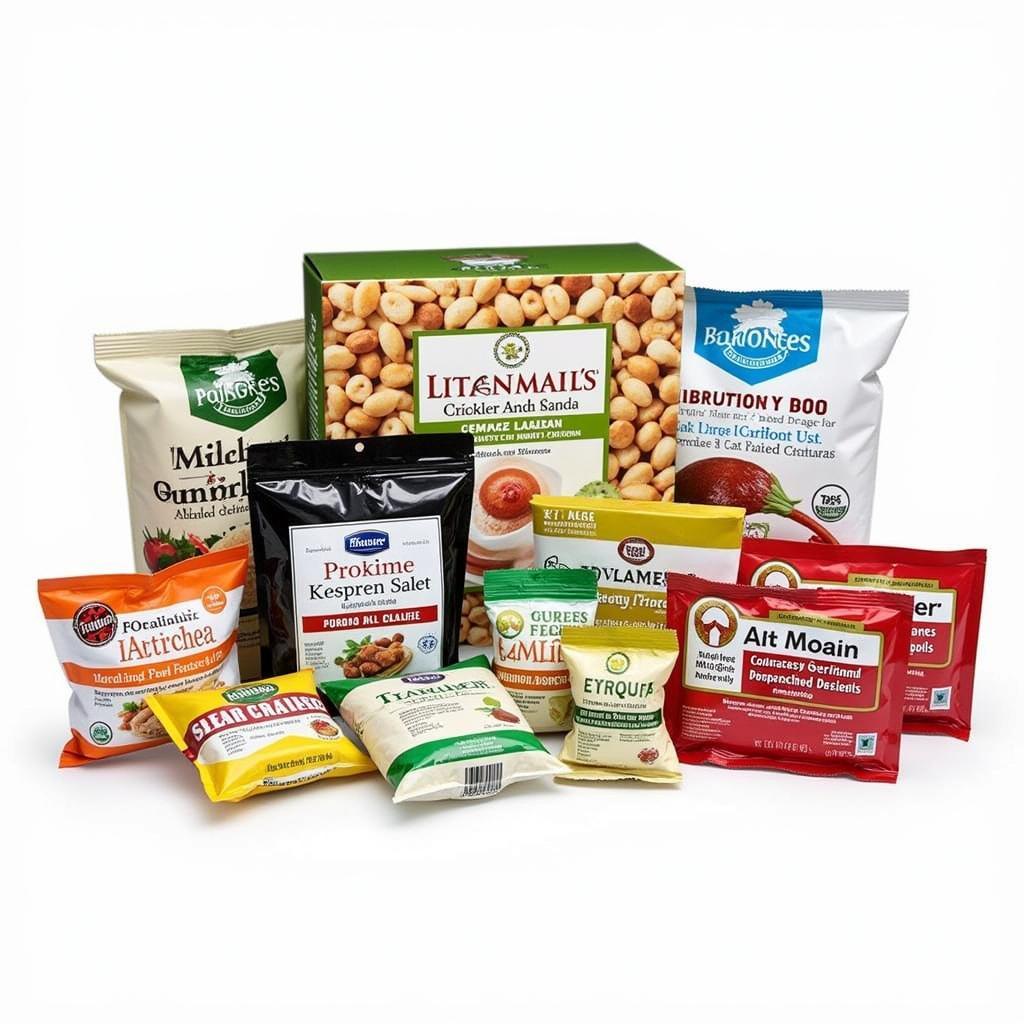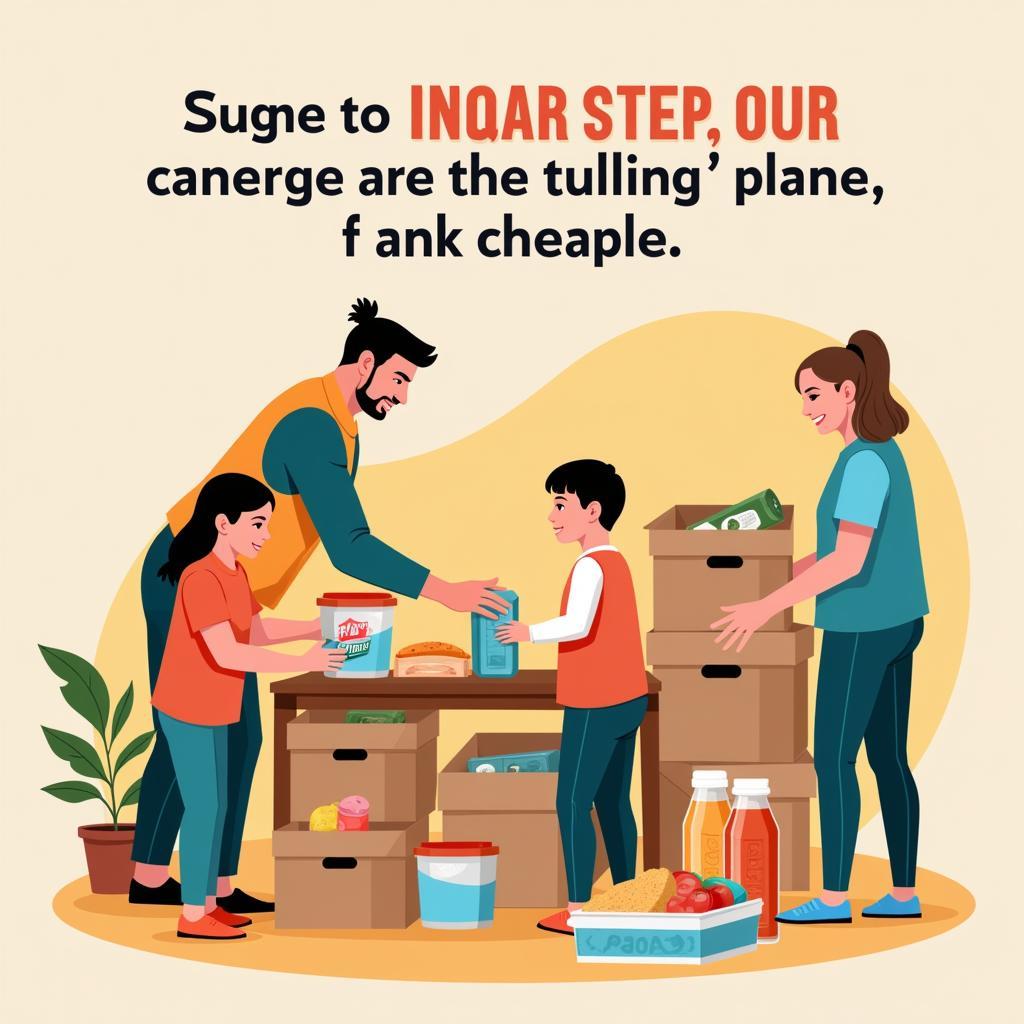Emergency Food Packets are becoming increasingly important in today’s uncertain world. Whether it’s a natural disaster, power outage, or economic hardship, having a reliable source of food can make all the difference. But what exactly are emergency food packets, and how can you choose the right ones for your needs?
What Are Emergency Food Packets?
 Assortment of Emergency Food Packets
Assortment of Emergency Food Packets
Emergency food packets, also known as survival food or MREs (Meals Ready-to-Eat), are pre-packaged meals designed to provide sustenance during emergencies. They are typically shelf-stable, requiring no refrigeration or cooking, and offer a balanced source of calories, protein, carbohydrates, and essential nutrients. These packets come in various forms, including freeze-dried meals, dehydrated rations, and ready-to-eat pouches.
Why Should You Have Emergency Food Packets?
 Family Preparing Emergency Food
Family Preparing Emergency Food
Imagine facing a sudden crisis. Your local grocery store shelves are empty, power is out, and you have limited access to cooking facilities. This is when emergency food packets become a lifeline. Here are some reasons why having them is crucial:
- Disaster Preparedness: Natural disasters like hurricanes, earthquakes, and floods can disrupt supply chains and leave you without access to fresh food for days or even weeks.
- Power Outages: Extended power outages can render your refrigerator and stove useless, making it impossible to store or cook food.
- Economic Hardship: Job loss or financial instability can impact your ability to afford groceries.
- Peace of Mind: Knowing you have a readily available food source during emergencies can provide invaluable peace of mind for you and your loved ones.
Choosing the Right Emergency Food Packets
Selecting the right emergency food packets requires careful consideration of several factors:
- Shelf Life: Look for packets with a long shelf life, ideally five years or more. Pay attention to expiration dates and rotate your supplies regularly.
- Dietary Needs: Consider any dietary restrictions or allergies when choosing your meals. Many manufacturers offer gluten-free, vegetarian, and other specialized options.
- Taste and Variety: While survival is the priority, opting for palatable meals can make a significant difference in morale during stressful situations. Explore different flavors and options to ensure your food supply is as enjoyable as possible.
- Packaging: Compact and durable packaging is crucial for easy storage and transport. Consider whether you need individual servings or bulk options depending on your household size.
Investing in oxygen absorbers food can significantly extend the shelf life of your long term food storage rice, ensuring its freshness and edibility for years to come.
Storing Your Emergency Food Packets
Proper storage is essential to maintain the quality and shelf life of your emergency food packets. Follow these tips:
- Cool, Dry Location: Store your packets in a cool, dry place away from direct sunlight, heat sources, and moisture.
- Rodent-Proof Containers: Protect your food supply from pests by storing it in sturdy, rodent-proof containers such as a food safe barrel.
- Rotation: Practice the FIFO (First In, First Out) method by regularly rotating your stock, consuming older packets first.
Conclusion
Emergency food packets are not just about surviving; they’re about thriving in the face of adversity. By investing in high-quality emergency food packets and storing them correctly, you can ensure you and your loved ones have a reliable source of nutrition during times of uncertainty. Remember, preparedness is not about panicking; it’s about peace of mind.